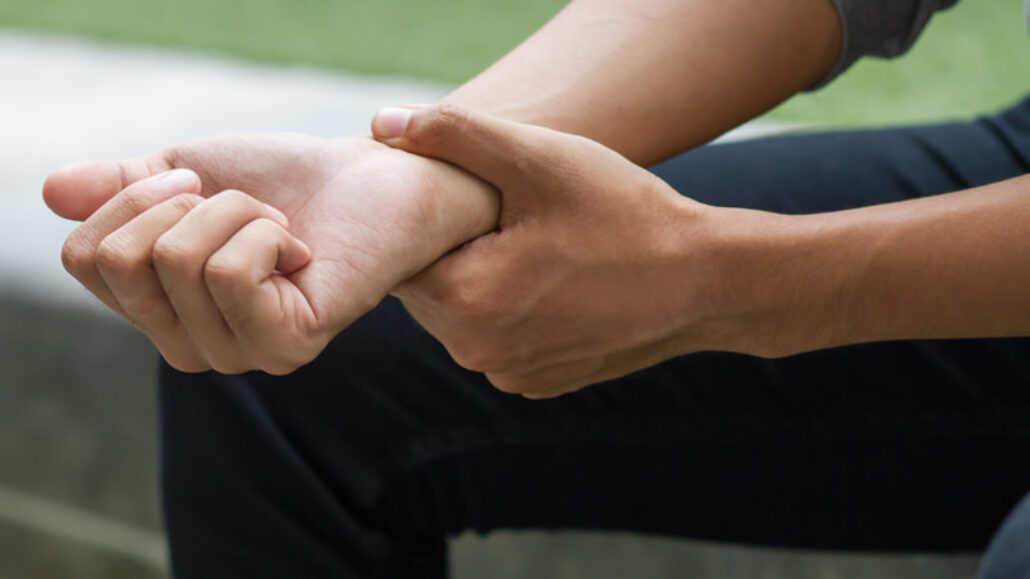Dr. Parisi discusses the treatment of wrist fractures, one of the most common fall-related injuries.
It’s instinct to reach out when we lose our balance. We fling our arms out to break our fall, and they frequently absorb the brunt of the impact. As a result, it’s no surprise that falls are the most common reason behind wrist fractures.
Dr. Debra Parisi specializes in upper extremity surgery, and has treated her share of wrist fractures. She explains how these fractures are treated and the complications that can be associated with them.
Wrist fractures can happen to anyone
“The radius is the larger bone in the forearm, and the most commonly broken bone in the arm,” she explains. The end of the radius closest to the wrist is called the distal end, so you’ll hear wrist fractures referred to as distal radius fractures. The majority of distal radius fractures occur within one inch of the end of the radius, but the break can occur in many different ways.
People with osteoporosis are at higher risk for wrist fractures
“Anyone can suffer a broken wrist. Even young healthy bones aren’t proof against severe trauma like a car or bike accident,” says Dr. Parisi. “But older, osteoporotic patients are at increased risk for a fracture.”
Osteoporosis is a bone condition that makes bones more fragile. Most cases are concentrated in postmenopausal women and older men. “For patients with osteoporosis, even a minor fall can cause a fracture,” says Dr. Parisi. “However, treatment for osteoporosis can help to address and reduce this fracture risk.”
Complications related to wrist fractures
With timely medical treatment, wrist fractures almost always heal. “This is true even for patients who have osteoporosis,” Dr. Parisi points out. “In my 14 years of practice I have seen only one patient who has not healed a wrist fracture. The issue with wrist fractures is not so much the lack of healing, but loss of function and residual pain if the fracture heals in a nonanatomic position.
Treatment for wrist fractures
“If you break your wrist, you may feel pain, numbness, bruising, and swelling,” says Dr. Parisi. “Your wrist may also look visibly deformed or out of position. The most important concern is to put any broken bones back into position and stabilize them until they have a chance to heal. For these reasons, I encourage people to get a medical evaluation immediately—certainly within 24 hours.”
Treatment for wrist fractures depends on the severity and complexity of the break. “We have several treatment options for wrist fractures,” Dr. Parisi explains. “In some cases, casting or splinting may be enough to hold the bones in correct position while they heal. If a fracture is more complex, surgery may be required to properly position the broken bones.”
At Summit Orthopedics, upper extremity specialists like Dr. Parisi are ready to provide compassionate treatment if you’ve taken a spill. Whether you’ve suffered a minor fracture or a complex break, we offer the expertise and special treatments required to help you recuperate quickly and completely.
Summit Orthopedics provides personalized hand and wrist expertise
The function of our hands is integrated through our wrists and arms to our shoulders; a problem anywhere along our arm may have a significant impact on hand function and quality of life. If you experience an injury or uncomfortable symptoms, our fellowship-trained hand and wrist surgeons are here to help. Summit physicians receive the highest levels of training and exclusively provide individualized care for conditions of the hand, wrist, and elbow.
Start your journey to better function and less pain. Find your hand expert, request an appointment online, or call us at (651) 968–5201 to schedule a consultation.
Summit has convenient locations across the Minneapolis-St. Paul metro area, serving Minnesota and western Wisconsin. We have state-of-the-art centers for comprehensive orthopedic care in Eagan, MN, Plymouth, MN, Vadnais Heights, MN, and Woodbury, MN, as well as additional community clinics throughout the metro and southern Minnesota.
More resources for you
- Meet Dr. Debra Parisi
- Learn how to wrap your wrist
- What is Dupuytren’s Contracture? Can It Be Treated?

